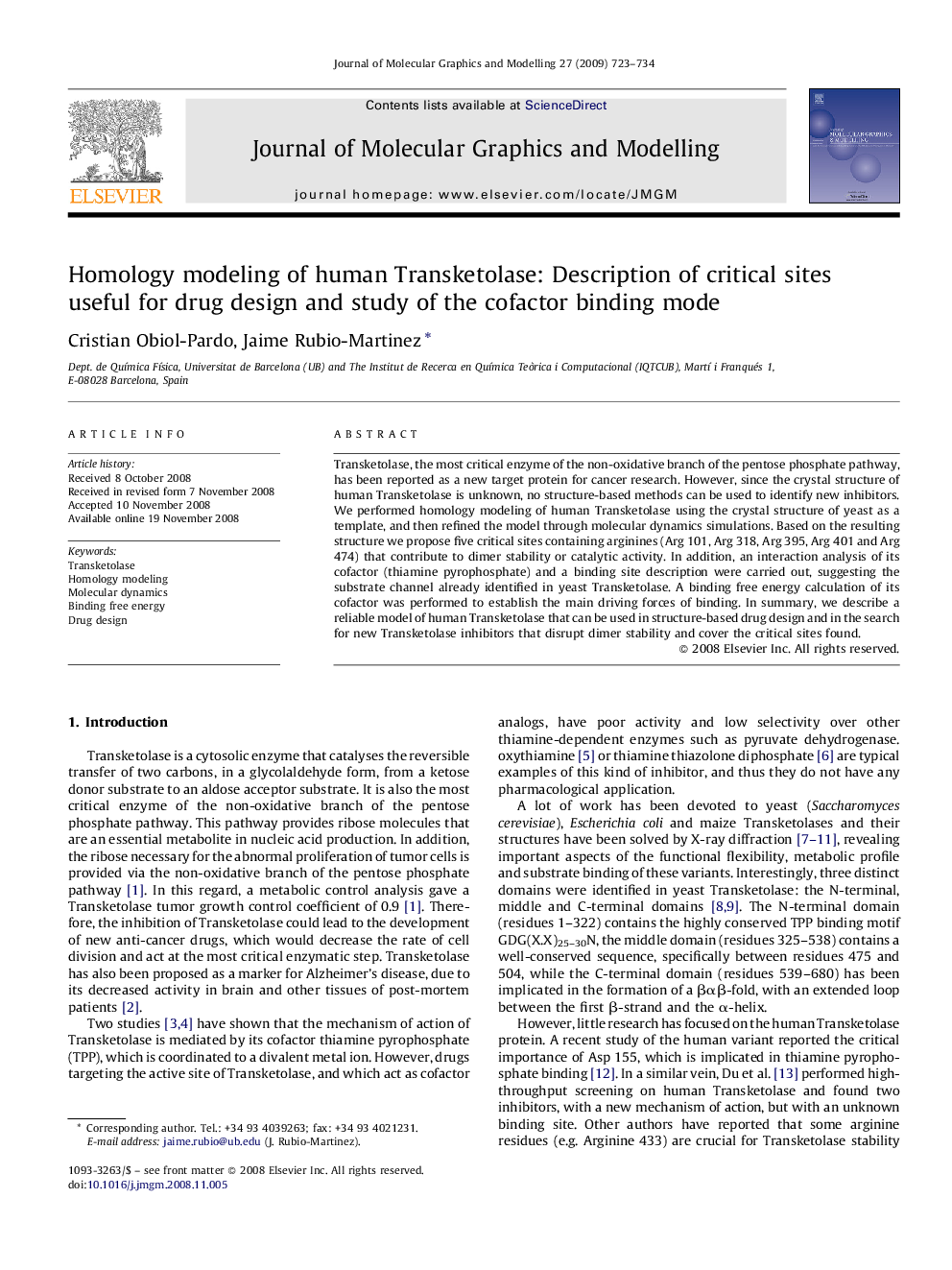| Article ID | Journal | Published Year | Pages | File Type |
|---|---|---|---|---|
| 442949 | Journal of Molecular Graphics and Modelling | 2009 | 12 Pages |
Transketolase, the most critical enzyme of the non-oxidative branch of the pentose phosphate pathway, has been reported as a new target protein for cancer research. However, since the crystal structure of human Transketolase is unknown, no structure-based methods can be used to identify new inhibitors. We performed homology modeling of human Transketolase using the crystal structure of yeast as a template, and then refined the model through molecular dynamics simulations. Based on the resulting structure we propose five critical sites containing arginines (Arg 101, Arg 318, Arg 395, Arg 401 and Arg 474) that contribute to dimer stability or catalytic activity. In addition, an interaction analysis of its cofactor (thiamine pyrophosphate) and a binding site description were carried out, suggesting the substrate channel already identified in yeast Transketolase. A binding free energy calculation of its cofactor was performed to establish the main driving forces of binding. In summary, we describe a reliable model of human Transketolase that can be used in structure-based drug design and in the search for new Transketolase inhibitors that disrupt dimer stability and cover the critical sites found.
